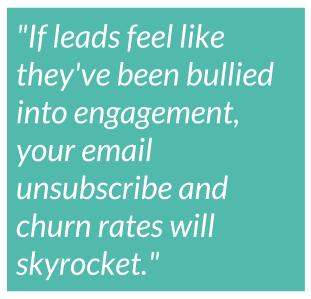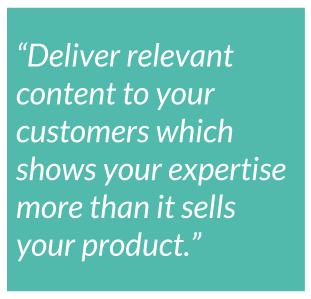You may have heard of the Trust Economy. In the past 10 years or so it’s exploded in popularity and renown.
Essentially, the Trust Economy is the theory that reputation, trust, and an inherent belief in the goodness of people are creating a new economy, one that can be (like US Dollars) be exchanged for goods and services.
Consider the popularity of businesses like Uber, HomeExchange, CouchSurfing, and (of course) AirBnB…
Between the summer of 2012 and the summer of 2014, AirBnB stays in the city of Paris skyrocketed, from 97,799 guests to 517,821.

Some economists are estimating that global revenue from Trust Economy businesses (and the growing sector) will rise to $335 billion dollars in the next ten years.
The way we trust (and our likelihood to do so is changing).
Psychological Case Study:
A Pew Study from 2011 “found that Facebook users are even more likely to be trusting. We used regression analysis to control for other factors and found that a Facebook user who uses the site multiple times per day is 43% more likely than other internet users and more than three times as likely as non-internet users to feel that most people can be trusted.”
In the words of Rachel Botsman (whose TED Talk “The Currency of the New Economy is Trust” has almost 1 million views) “Virtual trust will transform the way we trust one another face to face.”
So how can you take advantage of the Trust Economy? How can you develop trust with prospective consumers?
Robert Cialdini, a social psychologist and professor of Psychology and Marketing, theorized six principles of social influence:
Cialdini’s six principles are:
- Reciprocation: We are compelled to return favors, often in greater value than the original (see Chapter 2: Try Before You Buy)
- Commitment/Consistency: We want to act consistently with our commitments and values (see Chapter 6: Tricking the Brain)
- Scarcity: The less available a resource, the more we want it (see Chapter 1: Creating Urgency)
- Liking: The more we like people, the more we want to say yes to them.
- Social Proof: We look to others to guide our behavior.
- Authority: We trust experts and those of high status or power.
I think it’s safe to say we’ve covered the first three principles of social influence, so let’s dive into those last three, and how they effect Trust between business and customer.
#33. Creating Likeability
It’s not a huge surprise that people prefer to say yes to people they know and like. A request coming from your best friend for a $100 loan is far more appealing than one from a complete stranger.
The difficulty arises when we’re talking about a business and a consumer.
There are a few recommendations (beyond “include a picture and smile”) but, to be honest, there are few differences between likeability for a business or for an individual…
Psychological Case Study:
A study conducted at UCLA asked subjects to rate more than 500 adjectives “based on their perceived significance to likeability.”
But the adjective most associated with likeability weren’t “gregarious, intelligent, or attractive” but rather “sincerity, transparency, and capacity for understanding.”
All those adjective can be just as easily applied to a business (“sincere” in your advertising campaigns, “transparent” in your mistakes and business practices, and “understanding” in your ability to empathize with your prospective customers) as an individual can.
Three more characteristics of likeable brands:
1. They Ask Questions
Leads and customers like to know they’re being listened to. If your brand is focused only on what you’re doing, your customers will notice. Ask what your customers are concerned about, what their biggest frustration is. Ask them for advice on what you should do next, or why.
Get them involved in your success, and they’ll have a vested interest in it.
2. They Aren’t Desperate for Attention
If someone feels like they’ve noticed or engaged with your brand of their own accord, they’re far more likely to have a positive opinion of you. If they feel like they’ve been bullied into engagement, your email unsubscribe and churn rates will skyrocket.
Instead, win people over with sincerity and confidence (but not overconfidence). When given attention (particularly in high-profile instances of PR or write-ups) shift focus to your colleagues, employees, etc.
3. They are Dependable
If someone recommends you to a friend, you need to be exactly what they said you were. If you change an element of your service, make it clear, make it obvious, and tell everybody. Surprises (like change) aren’t good for developing a reliable relationship with your customers.
Consider a “grandfather’ed” pricing structure, so anybody who’s currently subscribed won’t end up paying more for the same product in the future.
How you can use this psychological factor for conversion rate optimization:
- Create a reputation of a brand which communicates with its customers in a personable, genuine way. Don’t send templated questionnaires, but ask simple questions without an email layout. This is particularly important in any social media strategy.
- Be personable. Ensure your emails are signed off with a first name (test a last name as well). Show your face and put time and energy into your “About Us” page.
#34. Social Proof
We look to others to guide our behavior.
After all, it’s easier than the alternative. Relying only on ourselves and distrusting the entire world around you would be a very scary way to move through it.
But this faith in others can have an extremely interesting effect on the way we feel about the people, places, and businesses around us.
Psychological Case Study:
You may have heard of the “Man looking skyward” experiment. In 1969, a study in the Journal of Personality and Social Psychology was performed on the streets of New York City. A single man stopped on the street and stood, looking straight up in the air as if there was something there. The study’s objective was to determine if social proof plays a role in the reactions of pedestrians.

If prospective customers know that people like them have engage with or trust your business, they’re significantly more likely to do so themselves.
The primary way for you to communicate to prospective customers about your existing clients is through Customer Testimonials:
- They feature real and relatable people, increasing the personality of your page.
- They feature people similar to your site traffic, increasing the chance of that traffic trusting the rest of your message.
- They can showcase specific value points of your product or service you may not otherwise mention68
- They can be specific, offering almost case-study-like metrics, KPI’s and analytics in real-world and concrete terms.
The value of engaging with your business is never clearer than when a previous customer is willing to stand ahead of you and say “Seriously, this business behind me had a huge influence on my own success.”
Another way for you to create social proof is to be backed up by someone your prospective customer recognizes. This is done, primarily, through trust symbols.
Another Psychological Case Study:
A couple years ago, Express Watches (an online retailer for Seiko-brand watches) was looking to address their consumer’s anxiety regarding the nature of their product. As watches are notoriously susceptible to being imitated, Express Watches wanted to run a test to eliminate their consumer’s anxiety.
The test they ran was this:
They replaced an image on the right-hand side of their product page (which initially read “Never Beaten on Price”) with a blue and black trust symbol from Seiko itself (reading “Seiko Authorized Dealer Site”).

The result was dramatic: a 107% for conversion rate jump over the 30-day test, from 1.81% to 3.76% overall.
How you can use this psychological factor for conversion rate optimization:
- Feature the full name of your customer within your testimonial (as well as job title and business name if you’re B2B or SaaS): This increases the chance of your page traffic relating to the customer on a personal level.
- Feature the face of your customer: This has a huge effect on whether or not your testimonial is trustworthy and real.
- Ask that your customers under-sell your business to appear even more genuine. Something like “I was initially skeptical of the ROI you promised us, and we did have some difficulty at the start. However, your tireless customer service team worked with us and we’ve actually managed to surpass our expectations!”
- If your business isn’t quite a household name, consider using a larger brand’s name to create trust (either a trust symbol from a sector authority) or recognizable logos from the companies you’ve worked with in the past.
#35. Generating Authority
What makes someone worth listening to, beyond the fact that they’re likeable or that people you trust are?
How about when they know what they’re talking about?
Communicating your brand expertise through content marketing (and email marketing) is crucial to relationship-building between you and your prospective, or existing, customers.
Delivering high-quality, educational content isn’t just about keeping your brand top-of-mind for leads and customers, but also about developing trust and creating a reputation for know-how.
Psychological Case Study:
A great example of content driving authority is in the banking sector. In August of 2014, NewsCred ran a survey among 1,001 adults, asking them their banking behavior and reasoning.
The results were these:
- 31% of respondents said they have signed up to new products and services based on useful content from their bank.
- 58% say personal finance content helps them make decisions.
- 57% say communication from a bank can help them understand which products are most beneficial.
- 56% would trust a bank more if they received helpful, unbiased content from them
- 50% would likely stay loyal to a bank that provided high quality content
- 66% of 18 to 24 year olds say that they trust a bank more when it offers them helpful, useful content, significantly higher than the survey average of 56%
Finally, there are a few content mistakes that financial services (though of course the lessons are relevant to all sectors) sector is making that cause consumers to turn against content: being too sales-oriented (19%), boring (18%), long (12%), or hard to understand (11%).

How you can use this psychological factor for conversion rate optimization:
- Deliver relevant content to your leads and customers which shows your expertise more than it does your need for them to buy your product. Content should be roughly 80% educational content and 20% sales-oriented within any lead-nurturing campaign.
- Content should be delivered on a regular basis. While each audience and sector expects different amounts of content, the important thing is to deliver it regularly.
- If you have the resources, put time and energy into creating case studies and industry reports, as these are the most valuable types of content when it comes to building authority within your sector. Nothing makes you more trustworthy than a proven, original statistic.
Further Reading on Creating Trust:
- The currency of the new economy is trust
- The Importance of Brand Strategy in the Trust Economy
- 13 Habits of Exceptionally Likeable People
- Convert More Visitors By Improving Your Internal Site Search
- How to optimize conversion of your websites and mobile apps with 6 persuasion principles
- Do you believe me??—?On trust and merit-based marketing
Next Chapter




